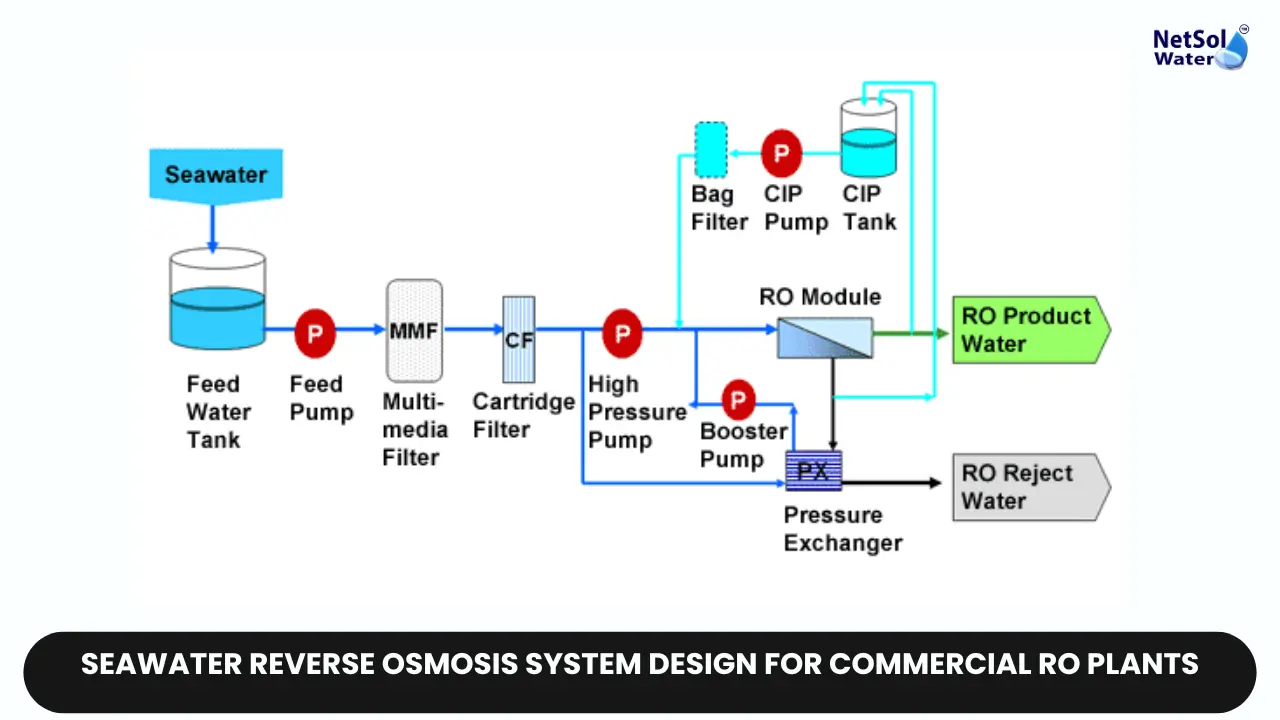Seawater Reverse Osmosis System Design for Commercial RO Plants
As the global population continue growing and freshwater resources face intensifying stresses from climate change and pollution, seawater desalination using reverse osmosis (RO) membrane technology has emerged as an essential solution for ensuring reliable drinking water supplies in coastal regions. However, designing efficient and cost-effective seawater reverse osmosis (SWRO) plants requires extensive engineering expertise to optimize system performance while minimising operating expenses and environmental impacts.
Let's explores key design considerations for integrating state-of-the-art Seawater Reverse Osmosis systems into large-scale municipal or industrial desalination facilities.
Intake and Pre-treatment
Procuring an adequate supply of high-quality seawater feed with minimal debris and fouling potential is the critical first step. Subsurface intakes consisting of beach wells, galleries or directionally drilled offshore pipes offer advantages over open surface intakes regarding pretreatment requirements, biofouling control, and environmental impact mitigation. However, geology factors heavily influence their feasibility.
Coagulation, multi-media filtration or membrane pretreatment like ultrafiltration cleans the source water to stringent levels, reducing risks of fouling expensive downstream RO membranes. Specialised dosing optimises coagulant and scale inhibitor use. Overall, pretreatment must provide RO feed that meets stringent silt density index (SDI) metrics for particulate matter.
Membrane Selection and Configuration
Determining optimal RO membrane type and configuration is important for efficient, dependable desalination. Spiral-wound polyamide thin-film composite membranes deliver high flux and salt rejection. However, feed water composition influences ideal membrane polymer type and configuration parameters like high cross-flow rate to minimise concentration polarisation. Pilot testing new membranes with actual feed waters ensures fouling assessments before full-scale deployment. Overall, system design considers an appropriate balance between capital costs for installing extra membranes versus operating efficiency.
Energy Recovery Systems
SWRO plants consume considerable energy due to the high pressures required for pushing seawater across RO membranes against natural osmotic pressure. Incorporating energy recovery devices (ERDs) to capture and reuse residual energy from the concentrated reject brine is critical for reducing operating costs and carbon footprint.
Leading ERD options include turbine-based isobaric energy recovery devices, work exchangers with ceramic rotating discs transferring energy between flows, and direct drive systems integrating a pressure exchanger directly coupled to the pump. Selection depends on factors like plant size and energy savings potential versus capital/maintenance expenditures for each technology.
Concentrate Treatment and Disposal
Disposing of the hyper-saline brine concentrate rejected by the SWRO process represents a major environmental challenge globally and necessitates careful planning. Blending in cooling water discharges can dilute concentrate in some industrial or power plant settings. Multi-stage flash distillation or mechanical evaporators crystallize solid salts for landfill disposal. Other options include conveyance to evaporation ponds or specialised deep ocean outfalls.
However, advanced concentrate treatment methods like forward osmosis, membrane distillation, electrodialysis or eutectic freeze crystallization show promise for recovering additional freshwater and harvesting salts for commercial products. Integrated designs maximise water recovery ratios while reducing liquid waste volumes.
Process Automation & Monitoring
Modern SWRO plants rely heavily on automated controls and online sensor monitoring to ensure stable, efficient operations around the clock. Advanced programmed logic controller (PLC) systems coordinate pretreatment, membrane array operations, chemical dosing, energy recovery and post-treatment processes in real time. They monitor critical instrumentation like flows, pressures, dissolved solids and pH.
Connected data acquisition systems channel measurements into predictive AI models which can optimise RO performance, forecast maintenance needs, trigger cleaning cycles and generate reports for authorities. Designing communication networks, human-machine interfaces, and cybersecurity protocols streamline monitoring across the integrated complex.
Conclusion
Implementing robust, cutting-edge seawater reverse Osmosis system design is crucial for desalination facilities aiming to deliver long-term, low-cost, sustainable freshwater production. While major cost categories like intake, pretreatment, membranes and energy recovery drive economic feasibility assessments, overarching design choices around automation, monitoring and environmental integration unlock opportunities for achieving true water supply resiliency. As desalination demand escalates globally, continuing refinements to optimise SWRO plant configurations will remain paramount.
To explore customised commercial RO plants, Industrial RO plants, ETP or STP solutions for your needs in your areas and nearby regions, contact Netsol Water at:
Phone: +91-965-060-8473
Email: enquiry@netsolwater.com



